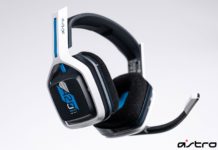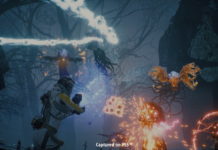These days, between the mainstream
successes of Dance Dance Revolution, SingStar, and especially Guitar Hero,
music-based games are all the rage. Titles that would have been niche releases
just a year or two ago are now mainstream hits — just ask Elite Beat Agents.
Their current popularity also allows more obscure titles a shot at a major
release. This is the situation regarding Jam Sessions, a program for DS that
began its life as “Sing and Play DS Guitar M-06” by Japanese developers Plato.
The program was picked up by Ubisoft, who made significant improvements before
releasing it in America and Europe.
Let’s get one thing clear, right off
the bat: Jam Sessions is not a game. Anyone looking for something similar to
Guitar Hero that they can take with them isn’t going to find it here. Jam
Sessions can’t be “won” (or “lost,” for that matter), it doesn’t score or judge
you on your performance in any way, and its focus isn’t even on the licensed
songs included on the cartridge. Plain and simple, Jam Sessions is a virtual
guitar, and whether you like it or not depends very heavily upon how much that
concept appeals to you.

Jam Sessions is controlled easily
enough. The D-Pad (or the face buttons, depending on whether you’re left- or
right-handed) correspond to the various chords used in whatever song you’re
playing, and the touch screen is used for strumming the virtual strings. Holding
the button down then strumming produces the chord in question, and (just like
with a real guitar) the sound is subtly different depending on whether you strum
up or down; strumming without holding any buttons produces a muted strum sound.
Your chord palette is pre-set for the game’s included songs, but for Free Play
mode, you construct your own palette from over a hundred different chords (the
chord palette can hold 16 chords at any time: one for each direction and
diagonal, and a second set that’s accessed by holding down the L button).
Jam Sessions contains 20 licensed
tracks (as diverse as Bob Dylan’s “Like A Rolling Stone” and “I’m With You” by
Avril Lavigne), but these are included as a concession to game-style levels;
more or less any guitar-based song can be recreated here. The only thing
standing in the way of the average DS owner becoming a Jam Sessions master is
the software’s learning curve, which is practically as steep as really learning
to play guitar. Sure, the physical aspects of playing aren’t nearly as hard (and
the fact that Jam Sessions has just one string simplifies things considerably),
but anyone expecting to progress far beyond Coldplay’s structurally-simple
“Yellow,” much less play their own songs, will need to become accustomed to
complex strumming/chord patterns. While the title’s marketing claims that anyone
can pick up Jam Sessions and play, that’s like saying that anyone can pick up a
guitar and play: sure, it may be true, but long hours of practice are required
before you’ll be able to play anything worth listening to.
There are plenty of options here
that will delight music enthusiasts. There are six different effects palettes,
which can each be customized to alter distortion, delay, flanger, and more. The
guitar’s sound can also be tuned, accompanied by a metronome, and otherwise
altered in tons of ways. DS musicians can record a few original compositions
directly to the cartridge for later playback, and by connecting the DS to a PC,
users can record and modify their songs to their heart’s content. Also, while
Jam Sessions is visually clean and simple, you can choose between any of over 60
different visual themes, as well as multiple string variations, each of which
displays a unique animation when strummed.

Jam Sessions is a unique, well-made
piece of software that has definite appeal to a small portion of the population,
but it will frustrate many who try it. It’s the perfect tool for musicians to
carry with them, as they can record and save tunes as inspiration strikes,
almost like a musical notepad. Anyone with little musical training who
approaches Jam Sessions lightly will likely be frustrated within minutes. For
those with the patience and understanding to weather the initial difficulty,
though, Jam Sessions offers limitless potential and incredible possibilities.
Review Scoring Details for Jam Sessions |
Gameplay: 9.0
Controls are crisp and responsive, and there’s plenty of room for player
customization. While there’s little actual “gameplay” to be found here, Jam
Sessions “plays” as well as one could hope for.
Graphics: 7.7
Jam Sessions graphics are minimal, but crisp and functional. A wide variety of
“theme” artwork does spice things up considerably.
Sound: 9.3
The game admirably mimics the myriad sounds that can be produced with a guitar.
Sound quality is remarkably comparable to an actual guitar. The DS’s tiny
speakers aren’t really optimal, but through headphones, external speakers, (or
potentially the game’s upcoming amplifier peripheral) it sounds incredible.
Difficulty: Hard
Jam Sessions should be approached with no less than the patience and dedication
one would have if trying to learn a traditional musical instrument. The learning
curve is immense.
Concept: 9.1
If any system is tailor-made to this type of guitar simulation, it’s the DS.
Being able to create and record musical compositions on the fly, anywhere, is a
great idea and an impressive achievement.
Overall: 9.2
Jam Sessions is practically flawless at what it’s trying to do. If you come in
expecting a game, you’ll be frustrated and disappointed. If you come in
expecting a versatile musical tool, you’ll be pleased and impressed.









